Table of contents
Fenugreek seeds ( Trigonella foenum-graecum) come from fenugreek, also called methi or goat's horn. They can be eaten fresh (raw), cooked or roasted. The seeds are mostly used as a spice, but also as a medicinal remedy.
Using fenugreek seeds in the kitchen:
Fenugreek seeds, whole, chopped or as fenugreek powder, are excellent in oriental dishes, especially in Persian and Indian recipes. They are often found powdered in Indian spice mixtures (such as curry powder), in the Turkish spice paste Çemen or in various mustard specialties. 12 They can also be used as a spice in soups, vegetable dishes and vegan stews. Fenugreek seeds also refine chutneys, pickles, dals, vegan flatbreads and salads. In South Tyrol, fenugreek seeds are very popular for use as a bread and cheese spice.
The spicy-bitter aroma of the seeds is very intense, which is why you should season them carefully. The walnut-like taste only really develops through the heating process; this also reduces the bitterness.
Fenugreek seeds harmonize well with vegetables such as carrots, celery, onions and parsnips. Combinations with the following ingredients are an aromatic enrichment for many dishes: fennel seeds, coriander, cumin, lime, cloves,pepper, black cumin and cinnamon.
Raw fenugreek seeds (raw food quality) can be used to grow sprouts and sprinkle them over salads or vegetable stir-fries. However, the Federal Institute for Risk Assessment ( BfR) advises against eating them raw 5,6 (see chapter Dangers - Intolerances - Side effects).
Fenugreek leaves are also enjoying increasing popularity in cooking; they can be bought and used fresh (raw) or dried (Kasuri Methi), although the dried ones are much more aromatic.
Vegan recipe for zucchini with fenugreek seeds:
Ingredients (for 2 people): 500 g zucchini, 3 tomatoes, 1 onion, 6 frying peppers 'Pimientos' (alternatively yellow / red bell peppers), 1 cm fresh ginger (raw), 2 garlic cloves, 1 tsp chili flakes, a little oil for frying (e.g. rapeseed oil, refined), 2 tsp fenugreek seeds (organic), 1 bunch coriander leaves (raw), ½ tsp salt (or less).
Preparation: Heat oil in a large pan and add chopped onion, bell pepper, ginger, garlic and chilli flakes. Fry, stirring constantly, until the onion appears translucent. Add thinly sliced zucchini and tomatoes and fry for another 5 minutes. Add fenugreek seeds, salt and about two-thirds of the chopped coriander leaves and continue to fry until the zucchini is cooked. Serve sprinkled with the remaining coriander.
Making tea with fenugreek seeds:
The aromatic, bitter tea made from fenugreek seeds may not be to everyone's taste, but it is said to have many healing effects. There are two different ways of preparing it:
When preparing with hot water, 1 teaspoon of fenugreek seeds (crushed with a mortar) is enough for 1 cup. Pour boiling water over it and let it steep for about 3, preferably 5 minutes. After straining, sweeten to taste.
The second option is to use cold water. This method of preparation takes longer, but releases the ingredients of the seeds better: you need 2 tablespoons of fenugreek seeds in powder form for about 250 ml of cold water. Leave this mixture covered for about 3 hours at room temperature. Then bring the broth to the boil and strain the powder (possibly through a coffee filter). 1
Vegan fenugreek seed recipes can be found under the note: " Recipes that have the most of this ingredient ".
| Not only vegans or vegetarians should read this: Vegans often eat unhealthily. Avoidable nutritional errors. |
Shopping - where to buy fenugreek (seeds)?
Fenugreek seeds can be found as whole seeds and as powder in selected supermarkets, health food stores, organic shops, pharmacies, drugstores or on the Internet. Fenugreek seeds are less commonly part of the range at major retailers such as Coop, Migros, Denner, Volg, Spar, Aldi, Lidl, Rewe, Edeka, Hofer etc. In organic supermarkets such as Alnatura or Denn's you can usually buy goat horn as an ingredient in various organic spice mixtures or types of cheese.
In addition to whole seeds, pure spice powder made from goat horn seeds is also popular - often called methi powder, goat horn powder, fenugreek powder or fenugreek spice (not to be confused with the leaf powder). The powdered seeds are mostly packaged in tea bags as tea.
Organic fenugreek seeds are free from harmful substances. You can also find food supplements containing fenugreek seed powder or concentrate. Since you never know how much of the plant is contained in such preparations, we recommend giving preference to natural products.
Found in the wild:
Fenugreek still grows wild in the eastern Mediterranean region up to Central Asia, and also as far as southern and central Germany. This clover can be found at altitudes of up to 1000 m ( see Fenugreek leaves, raw).
Storage:
Whole fenugreek seeds have a much longer shelf life than crushed or ground seeds. Undamaged, whole seeds will last for at least 2 years in light- and airtight containers or jars. Ground products lose their aroma after just a few months and the oil contained in the seeds can develop a rancid taste over time.
Ingredients - nutritional values - calories:
In addition to the high carbohydrate content, the proportion of fat (approx. 6%) and proteins (23%) in fenugreek seeds is also significant. The proteins are made up of many essential amino acids (e.g. tryptophan, isoleucine, threonine, lysine, etc.). Fenugreek seeds contain a lot of mucilage (approx. 30%), saponins, sterols, flavonoids and essential oils. The seeds contain macro elements such as iron, copper, manganese and magnesium. They also contain vitamins such as pyridoxine (B6), thiamine (B1), folate (folic acid), riboflavin (B2) and small amounts of vitamin C. 2
The complete ingredients of fenugreek seeds, the coverage of the daily requirement and comparison values with other ingredients can be found in our nutrient tables. In the article Nutrients explained you will get a detailed insight into the topic.
Health aspects - effects:
Fenugreek tea warms you up from the inside as a hot drink. The mucilage it contains is mainly used to soothe colds, relieve coughing and cleanse the respiratory tract. 1
The amino acid histidine is said to prevent liver damage and the choline contained in it is said to prevent fatty liver disease. Diosgenin, a steroid, is said to help against colon cancer. 3
A 2014 study with Parkinson's patients showed a significant reduction in individual symptoms when treated with fenugreek extract. Fenugreek is said to delay damage to dopaminergic nerve cells. 4
Fenugreek seeds are said to promote milk production, which is why breastfeeding mothers often resort to fenugreek capsules from the pharmacy if milk production is delayed or low. However, clear results from relevant medical studies on its effectiveness are lacking. 11
Dangers - Intolerances - Side effects:
Pregnant women should not consume large amounts of fenugreek as it can trigger premature labor. In addition, consuming too large amounts can lead to general gastrointestinal problems as the seeds in particular have a ductless effect.
In 2011, a German organic gardening company imported contaminated fenugreek seeds from Egypt. These seeds were probably the source of the EHEC pathogen for the epidemic at the time (with life-threatening intestinal infections). There were around 53 deaths and hundreds of sick people. 5
In principle, there is no risk of infection if the seeds or sprouts 5 are thoroughly heated before consumption, e.g. by boiling or roasting. 6 Tea bags containing fenugreek seeds and herbal teas in general should be poured over boiling water and left to steep for at least five minutes, advises the Federal Institute for Risk Assessment ( BfR). 6
Use as a medicinal plant:
Fenugreek seeds are used as an accompanying medication for diabetes mellitus.
Folk medicine - naturopathy:
In naturopathy, fenugreek tea is used for liver problems. It is said to have a disinfecting and detoxifying effect, regulate blood pressure and strengthen the immune system. 1
In India, fenugreek seeds are used as an aromatic, carminative (anti-flatulence agent), tonic and aphrodisiac. Manufacturers of fenugreek capsules and extracts in Europe and the USA also often tout a positive effect on testosterone levels and libido. Neutral studies on this topic are hard to find.
In the case of smallpox, an infusion of the seeds helps to cool down.
It has been known since around 1200 that fenugreek seeds are useful as a hair growth agent. 7 Nowadays, capsules made from fenugreek seeds are increasingly recommended for hair loss to strengthen hair density and thickness.
Fenugreek seeds are also used externally as a poultice. When mixed with water and boiled briefly, the paste helps with inflammation of the respiratory tract, rheumatic pain, eczema and other skin problems. 1
Occurrence - Origin:
Based on discoveries from around 4,000 BC, the origin of fenugreek was long located in Persia, among other places; from there it reached ancient Greece and the Roman Empire. Today, however, two different scientific hypotheses about its origin are opposed to one another (Mediterranean region or Asia). 15,16
Fenugreek is currently found in southern Europe, Africa, the Middle East, India, China, the USA and Australia. According to a 2014 article, the main growing areas are India, Morocco, Egypt, Ethiopia and Turkey. 14
Cultivation - Harvest:
Fenugreek is cultivated in rows with a seed spacing of about 20 cm, so that the plants can develop well. The heat-loving spice plant needs a lot of sunlight, warmth and protection from the wind when sowing and growing. Fenugreek prefers fertile, humus-rich, permeable soil. However, the plant can also tolerate a lot of salt and drought. In optimal locations, fenugreek reaches a height of up to 60 cm. The flowers are cream-colored to light yellow. After a growth period of 4 months, you can harvest about 10 cm long, thin, beige-brown pods that are reminiscent of a fenugreek. Each pod contains 10-20 small, yellowish-brown, dented seeds. Before the seeds are sold, they must be dried and cleaned. If you rub the seeds between your fingers, they give off an intense smell. 8
Possible confusion:
Fenugreek can be confused with other types of clover. A close relative is savory clover ( Trigonella caerulea): It tastes very similar, although milder. However, fenugreek differs significantly from savory clover in terms of the shape and color of its flowers.
General information:
Fenugreek ( Trigonella foenum-graecum) belongs to the subfamily Faboideae and the legume family Fabaceae.
In ancient times, fenugreek was used as a feed, food and natural remedy. Foenum-graecum means "Greek hay". Even today, drought-tolerant fenugreek is an important source of feed for animals in countries such as Spain and Africa during periods of drought. 9
The German name "fenugreek" refers to the shape of the fruits, which protrude from the stem like "goat's horns". 13
Alternative names:
Common names for fenugreek or fenugreek seeds are: Methya, Methika, Piskavica, Fännezwock, Fine Gret, Greek hay, Grieschheu, Grünschau, cow fenugreek, beautiful Marie, beautiful Margreth, seven-time, seven-times, hour herb, time herb, goat fenugreek, yellowish sainfoin 10, philosopher's clover 9 or back fenugreek, fine Grete, filigrazie etc.
Names such as Rehkörnli, Rehkörner, Siebengezeugsamen, Greek hay seeds, cow horn seeds, cow beans, goat seeds and goat fenugreek seeds refer specifically to the seeds.
The official name of the drug is Foenugraeci semen (syn. Semen Foeni graeci).
Fenugreek seeds are called fenugreek seeds in English and çemen tohumları or çemen otu tohumu in Turkish.
Keywords for use:
The bodybuilding scene praises fenugreek as a natural testosterone booster and thus uses fenugreek seed extract as a dietary supplement.
Fenugreek seed oil is said to increase potency, which is why online shops (Switzerland, Europe, USA, etc.) advertise it accordingly. Because of its antibacterial effect, the oil is also added to massage oils.
Extracts from fenugreek seeds are used as a flavoring in sauces (e.g. soy sauce, fish sauce), roasted seeds are used in drinks or as flour in baked goods. 12
Literature - Sources:
Bibliography - 16 Sources
| 1. | Bockshornklee-info.de Bockshornklee-Tee. |
| 2. | USDA United States Department of Agriculture. |
| 3. | Raju J, Patlolla J, Swamy M et al. Diosgenin, a Steroid Saponin of Trigonella foenum graecum (Fenugreek), Inhibits Azoxymethane-Induced Aberrant Crypt Foci Formation in F344 Rats and Induces Aoptosis in HT-29 Human Colon Cancer Cells.Cancer Epidemiology Biomarkers & Prevention. 2004;13(8). |
| 4. | Nathan J, Panjwani S, Mohan V et al. Efficacy and safety of standardized extract of Trigonella foenum-graecum L seeds as an adjuvant to L-Dopa in the management of patients with Parkinson's disease. Phytotherapy research. Feb. 2014;28(2). |
| 5. | Bundesinstitut für Risikobewertung. Samen von Bockshornklee mit hoher Wahrscheinlichkeit für EHEC O104:H4 Ausbruch verantwortlich. 022/2011. |
| 6. | Bundesinstitut für Risikobewertung. Fragen und Antworten zur Verwendung von Bockshornkleesamen in Lebensmitteln. Aktualisierte FAQ des BfR vom 22. Juli 2011. |
| 7. | Keil G. Der Bockshornklee als altes Haarwuchsmittel. Fachprosaforschung – Grenzüberschreitungen. 2014;10: 37–55. |
| 8. | Quatmann C. Hausbuch der Kräuter. Der Gute Tip. SDK Verlag: Stuttgart. 1990. |
| 9. | Sprossen-Keimlinge.de Bockshornklee. |
| 10. | Pahlow M. Das grosse Buch der Heilpflanzen. Gesund durch die Heilkräfte der Natur. Nikol Verlag. 2013. |
| 11. | Löchelt P, Loytved C. Wie Bockshornklee die Laktation beeinflusst. Hebamme.ch 2015;3. |
| 12. | Deutsche-apotheker-zeitung.de Alban S. Bockshornkleesamen. Vorsicht vor falschen Versprechungen! 30/2011. |
| 13. | Arzneipflanzenlexikon.info Bockshornklee. |
| 14. | Vidyashankar GK. Fenugreek: An Analysis from Trade and Commerce Perspective. American Journal of Social Issues and Humanities. Fenugreek Special Issue Mar/Apr 2014: 162 ss. |
| 15. | Zandi P, Basu SK, Cetzal-Ix W et al. Fenugreek (Trigonella foenum-graecum L.): An Important Medicinal and Aromatic Crop. In: El-Shemy H. (ed.). Active Ingredients from Aromatic and Medicinal Plants. IntechOpen. 2017. |
| 16. | Mehrafarin A, Rezazadeh SH, Naghdi Badi H et al. A Review on Biology, Cultivation and Biotechnology of Fenugreek (Trigonella foenum-graecum L.) as a Valuable Medicinal Plant and Multipurpose. Journal of Medicinal Plants. 2011; 10 (37). |

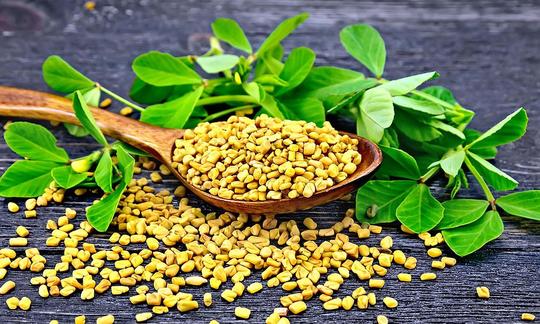

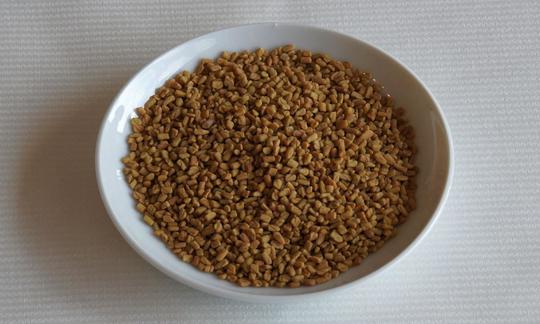

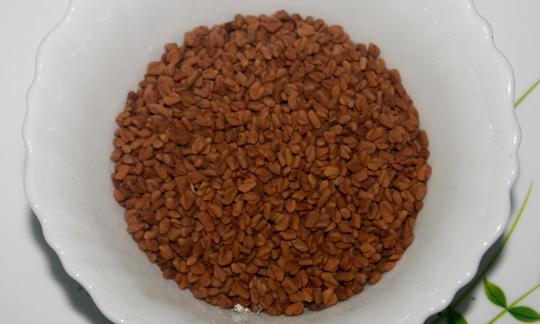

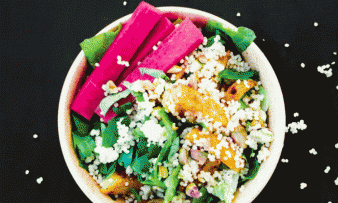
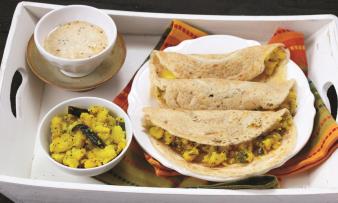





Comments